TIG welding, also known as Tungsten Inert Gas welding, is a precision welding technique that has gained popularity in the world of metal fabrication and art.
It is known for producing clean and precise welds, making it a perfect choice for creating intricate metal sculptures and metal artworks.
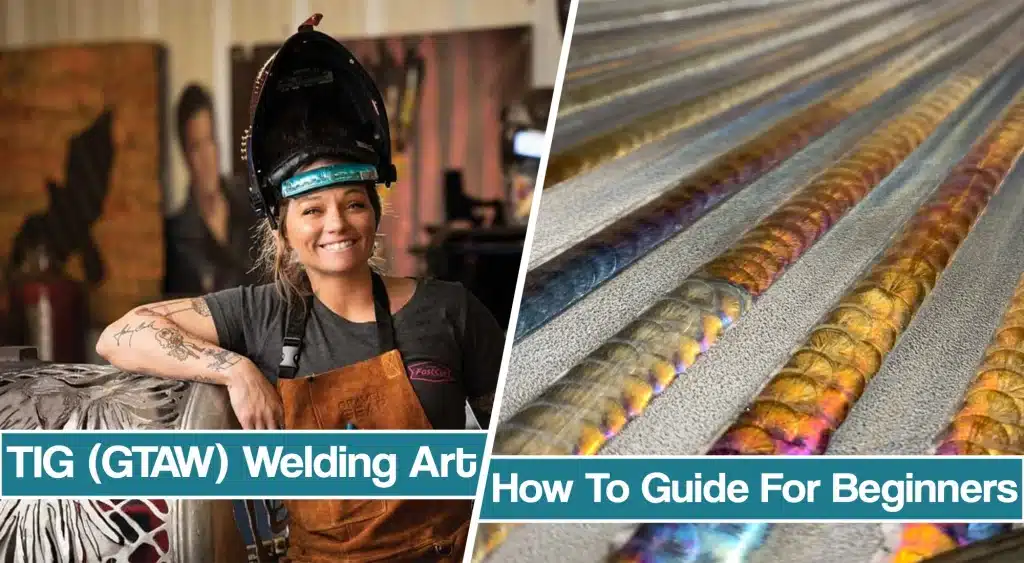
However, TIG welding can be a challenging task for beginners. This beginner’s guide to TIG welding art will provide you with a comprehensive understanding of the basics of TIG welding and the skills you need to get started in creating your own metal masterpieces.
What is Welding Art?
Welding art is a form of metal fabrication that involves the use of welding techniques to create artworks, sculptures, and functional objects. Stick, MIG, and TIG welding are some of the most commonly used welding techniques in welding art.
To create a welding artwork, an artist first chooses the metal that they want to work with and cuts it into the desired shape. They then use the welding machine to fuse the metal pieces together. Welding art can be as simple as creating a functional piece of furniture or as complex as creating a large metal sculpture.
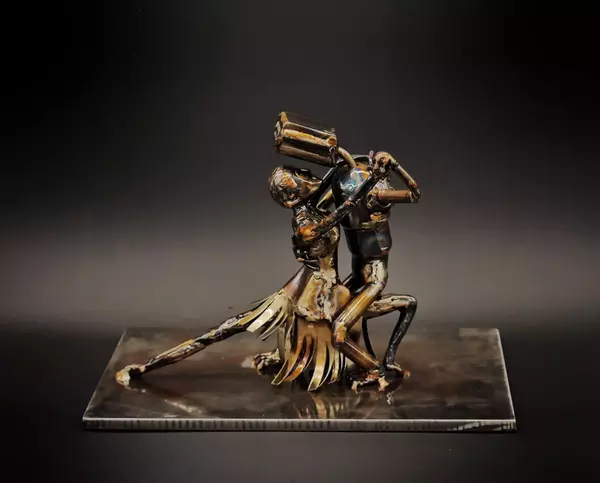
The process of welding art requires a high level of precision and skill, as even the slightest mistake can result in a ruined piece.
Why Pursue a Career in Welding Art?
Welding art is an exciting welding career that provides individuals with the opportunity to create beautiful and functional objects using metal. It also allows for a great deal of creativity, as artists can use a variety of techniques and styles to produce unique and one-of-a-kind pieces. Additionally, the demand for skilled welders in the manufacturing, construction, and artistic industries is high, making welding art a potentially lucrative career choice.
Overall, welding art is a fulfilling and rewarding welding career that allows individuals to bring their creativity to life through metal fabrication. With the right training and experience, anyone can become a skilled welder and create beautiful and functional pieces that will be treasured for years to come.
Beginners Guide to TIG Welding Art
To get into the world of Gas Tungsten Arc Welding art, there are several key things that you need:
- Welding equipment: TIG welding requires specialized equipment, including a TIG welding machine, a Tungsten electrode, and a filler rod. The equipment should be of good quality and suitable for the type of welding you plan to do.
- Safety gear: Welding can be hazardous, so it’s important to have the proper safety gear, including a welding helmet, gloves, and protective clothing.
- Welding skills: Welding art requires a high level of precision and skill, so it’s important to have a good understanding of TIG welding techniques and the ability to control the welding machine.
- Creative vision: Welding art is all about creativity and imagination. A welder who wants to get into TIG welding art should have a clear idea of what they want to create and the ability to bring their vision to life.
- Patience and persistence: Welding art can be a time-consuming and challenging process, so it’s important to have patience and persistence to see a project through to completion and get the best results.
Here are some TIG welding tips on how to get started and get the best out of your TIG weld art project.
Cleanliness And Weld Preparation
Cleanliness is crucial in TIG welding art because it plays a major role in achieving a good-looking weld. The presence of contaminants such as oil, grease, or rust can negatively impact the quality of the weld, causing porosity, lack of fusion, and reduced strength.
Therefore, before even considering making a TIG welding art, you should make sure all the components of the TIG weld, including the surface, tungsten electrode, filler rod, and shielding gas source, are critically clean.
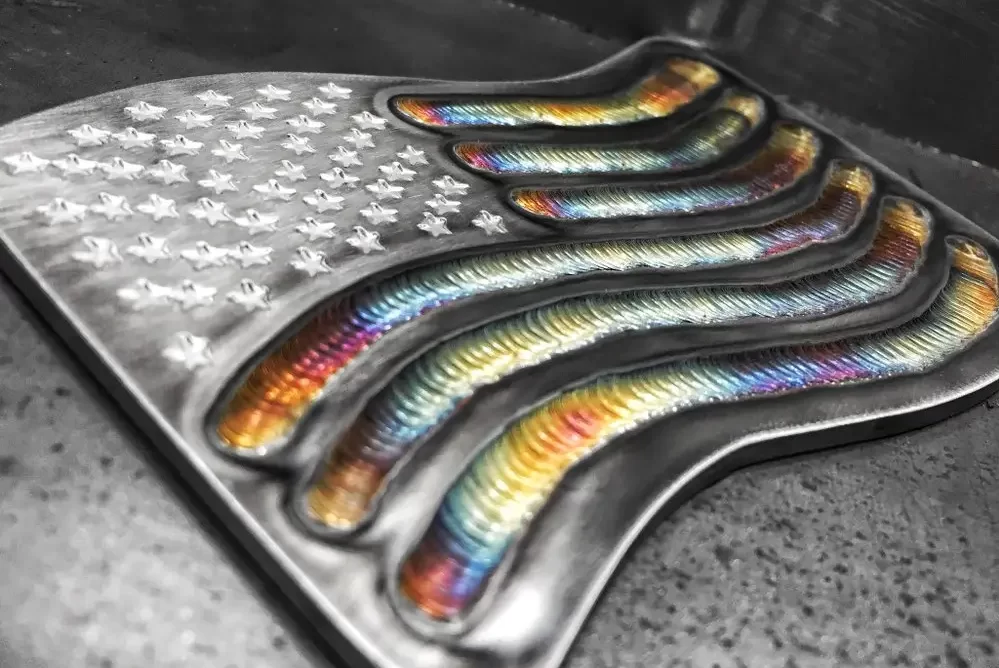
To achieve a high-quality TIG weld, the surface of the metal must be thoroughly cleaned. This ensures that there are no contaminants that could interfere with the welding process. Contaminants can cause the tungsten electrode to become contaminated, which can result in a poorly executed weld and increase the risk of porosity. Clean welds are aesthetically pleasing and can be polished to a high shine, adding to the overall appearance of the finished piece.
TIG Welder and TIG Welding Settings For Art Projects
TIG welding equipment is among the most complex and, therefore, expensive on the market, but the more options you have, the better you can control your welding process. However, for welding art, you don’t need a state-of-the-art machine, but there are still some crucial components. Since most TIG welding art is carried out on medium to thin stainless steel pieces, so you don’t need anything fancy.
The required amperage depends on the stainless steel thickness, but it usually ranges from 80-140 amps. Stainless steel welding is carried out at DC current, but if you are TIG welding aluminum occasionally, you will need an AC/DC TIG welder.
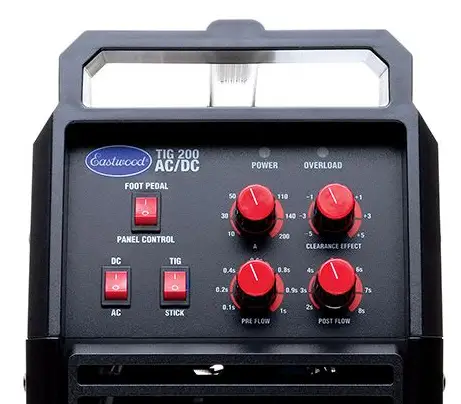
Besides the right current options, your welder should either have TIG pulse settings, or remote control with a foot pedal. Your TIG welder settings should be focused on limiting the size of heat affected zone and controlling the heat input. You might not be aware, but the high heat of one bead can affect the results on other beads in your art project, so carefully plan your welding or weld with cooling breaks.
Torch Setup
Welding art is all about precision and control, so you want to get as comfortable with a TIG torch as possible. Ideally, a WP-9 size torch will provide excellent control, and you can even opt for a flex head to get the most out of it.
The gas lens kit will provide excellent control over the shielding, promoting just the right amount to avoid porosity or other defects. To promote coloring and limit the heat-affected zone, use smaller gas lens cups on your torch.
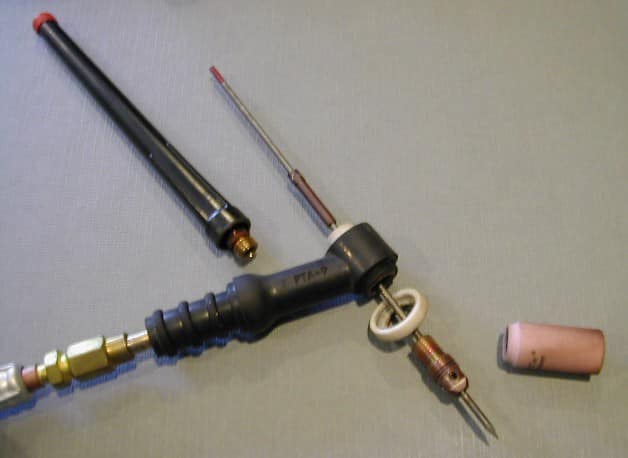
Besides the cap, make sure you are using the smaller diameter, clean tungsten. Since you are not welding critical welds with high structural integrity, you should go for a smaller diameter pure tungsten (green) electrode. You should always choose the size according to current welding art requirements.
Additionally, you should pay attention to the filler rod. TIG welding rods composition should match the base metal, therefore, usually stainless steel or aluminum. Also, the diameter should be suited to the size of the weld bead, or the project you are about to work.
Spend Time Practicing
It doesn’t matter if you are an experienced welder or a novice; before doing any TIG welding art, you should spend some time practicing. If you want to learn TIG welding, you can always follow our detailed guide. However, the key to learning TIG welding is to Start small, by using a small stainless steel plate, and laying a couple of beads, so you can see how your welds turn out. Stainless steel is expensive, so you really don’t want to start straight away with the main piece of your art.
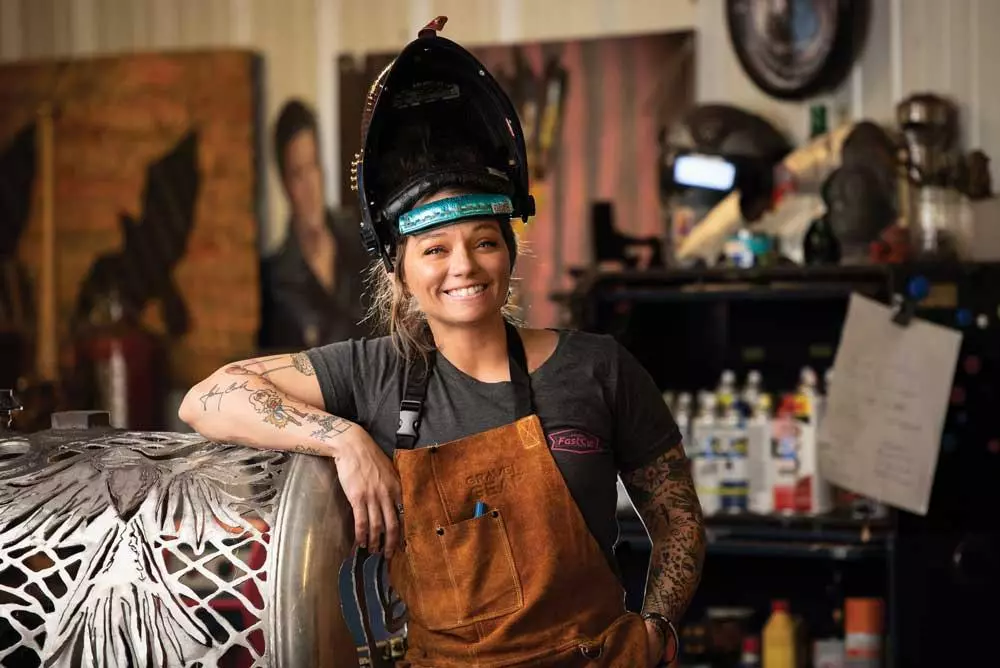
Once again, don’t start with the most complex shapes straight away. Start simple, with small details or logos that are simple enough to get you going, and help you get the hang of the welding art. Once you decided what you are going to work on, make sure you make a sketch on a piece. It is like doing a tattoo, guidelines will help you a lot in making the best out of it.
How To Get Colorful Welds?
If you are getting into a world of welding art, you don’t need your welds to be strong or corrosion—resistant, you need them to be pretty. To achieve pretty-looking and colorful welds, you will need good welding technique, a good TIG torch setup, and features such as pulse or foot pedal control.
Colors in stainless steel or aluminum welds are never a good sign if you are an industrial welder that‘s looking for the strongest and corrosion-resistant weld. Oxidation occurs once stainless steel or weld aluminum is exposed to atmospheric gases or due to the low thermal diffusivity of the base metal.
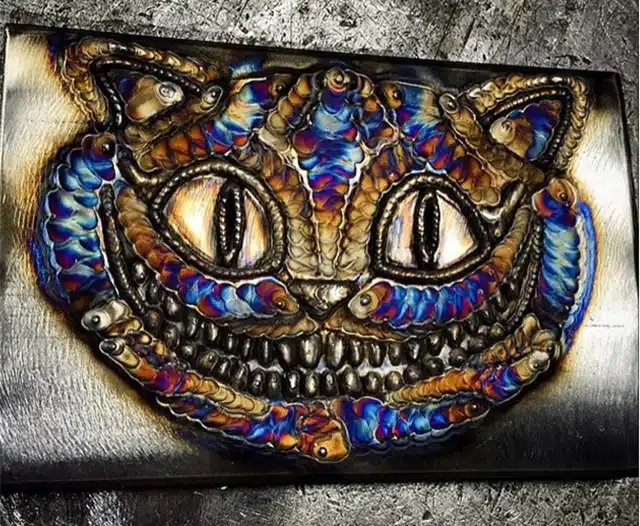
As a result, you get very pretty and aesthetically pleasing welds, but with worse properties. First, make sure your TIG torch setup is good. Shielding gas coverage is essential when trying to get colors, so you should ditch the collet body and go for a gas lens. The best way is to get an entire gas lens kit, which contains various cup sizes. Larger #12 cups provide excellent protection when doing longer runs. However, #6 cups will get you colors on shorter weld beads, but they are usually not enough to protect longer weld beads.
There are two ways to get to colorful welds. You can use the pulse feature on your machine, or pulse manually, by “pumping” your TIG foot pedal. As a beginner, you can start with a pulse, but once you start working your way up, you might find manual pumping can get you better-looking and more colorful welds. Fundamentally, both options will help you control heat input, which goes from high to low input in seconds.
The welding technique includes proper control over the travel speed, torch manipulation, and filler metal distribution. Ideally, you want to find a sweet spot where each one of these is at its medium. However, to get colors, you will need a somewhat slower travel speed, but don’t go super slow since you can overcook the welds. Once enough heat is inputted, dub the filler, and then move forward until you fill the entire weld. Like speed, rod distribution is somewhat slower than regular TIG welding.
Use a wide torch angle. Wider torch angles lead to more color opportunities because the argon gas cannot cover the welded area, so the colors start forming. You can use stepper angle in specific applications, but try to make it limited as possible.
Getting those good-looking and colorful welds takes a lot of time and practice, so do not be afraid to experiment. I’ve seen many people try, fail, and then give up on TIG welding art completely. If you are new to it, there are great chances these issues can occur, so don’t let them discourage you.
Let Everything Cool
Controlling the heat-affected zone of your weld pool is crucial in TIG welding art. Not many are aware that the heat of the nearby weld can affect the properties and, more importantly, the appearance of your welds. Therefore, it is crucial to let everything cool properly.
The first step is employing the post-flow on your TIG welder. The post flow will help you protect the weld pool until it is cooled down, and also help extend the lifespan of your TIG welding torch.
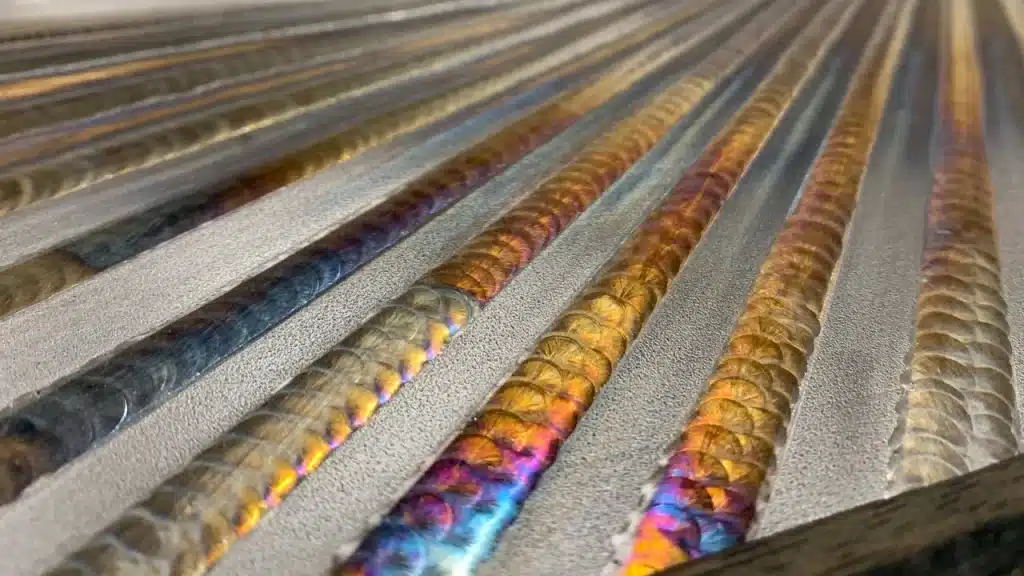
Providing adequate post-flow will make sure you get the best out of your TIG welding art. Additionally, you should plan your welding in advance. Make sure you don’t weld two nearby beads straight away. Start by welding one bead on the side, one in the middle, then one on the other side. If the entire pieces get too hot, take a break and then weld afterward to ensure the best TIG welding art results.
Conclusion
TIG welding art is a rewarding and challenging medium for welders who are interested in creating unique and beautiful pieces. While you can do it with MIG welding, Shielded Metal Arc Welding (Stick welding), or Flux-cored arc welding, TIG welding requires a high level of skill and attention to detail, it also offers an opportunity for welders to express their creativity and bring their visions to life.
By using the proper equipment, maintaining a clean work environment, and honing their TIG welding skills, welders can achieve high-quality results and create stunning works of art. Whether it’s creating metal art sculpture, custom car parts, or metal jewelry, TIG welding art offers endless possibilities for creative expression and practical applications. Whether it is TIG welding steel or MIG weld (Metal Inert Gas), you will need some time and patience to get the best out of everything.
Resources
- https://bakersgas.com/blogs/weld-my-world/the-art-of-tig-welding
- https://www.millerwelds.com/resources/article-library/welding-colors-what-they-mean-and-why-they-matter
- https://www.fronius.com/zh-cn/china/welding-technology/info-centre/magazine/2020/art-of-tig-welding
- https://www.weldingtipsandtricks.com/welding-art.html





